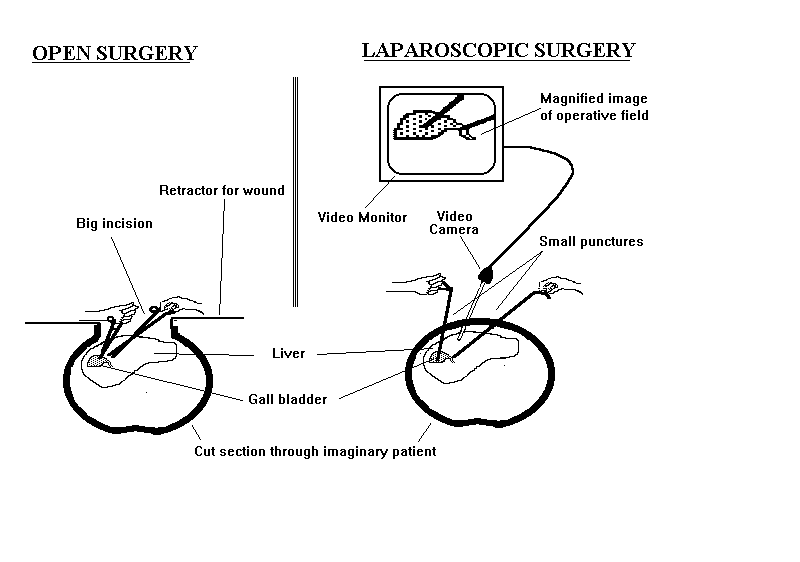 HOME
HOME  EMAIL ME
EMAIL ME 
WHAT IS LAPAROSCOPIC SURGERY?
Traditionally, the thought of an operation conjures up visions of pain and suffering. This is because certain techniques used in surgery until now have changed little over the centuries. However in the last 6 years or so many changes have occurred. This has come about with the advent of Laparoscopic Surgery, also called "keyhole surgery" or "minimally invasive surgery"
Certain diseased organs that need to be removed at the time of operation are fairly small in size. For example a gall bladder is the size of a crumpled piece of paper and the appendix is about the size of a thick earthworm. Despite this, the actual cut or opening that has traditionally been made to remove these organs has been enormous. The classic open ope ration for the removal of the gall bladder usually may involve a 20 to 25 cm long cut, and in a well built adult the incision for the removal of the appendix may be 15 cms. long.
Why is such a big cut needed to remove a rather small organ? The main reason is that a surgeon needs to see what he is doing, so a big hole has to be made to let in light and leave space for the surgeons hands and instruments, and other organs may need inspection through the same opening. (see Fig 1) This big cut causes a fair amount of bleeding, a lot of pain, and prolonged disability after operation. With the advent of fibre optic technology and chip-based video cameras all this has changed. It is now possible to remove diseased organs through small punctures.
Fig 1: Why a big cut is needed in conventional surgery

In order to perform a video laparoscopic operation a 1cm. diameter rod like telescope is inserted into the stomach cavity (the abdomen) to view the organ and inspect and check all areas. Illumination is provided via the fibre optic bundle transmitting light from an extremely bright halogen or xenon light source. The image picked up by the telescope is converted into a greatly magnified video image through a chip camera. (Fig 2 & 3) All that the surgeon needs to do now is to make a couple of other small punctures to insert slender instruments to manoeuvre and take out the diseased organ. Since the gall bladder or appendix are fairly small organs they can come out easily through a small puncture. After such surgery the blood loss is minimal, the pain is negligible, and the patient is able to return to normal activities in a week or so.
Fig 2

Fig 3
Actual operative picture of gall bladder at operation

 HOME
HOME  EMAIL ME
EMAIL ME 